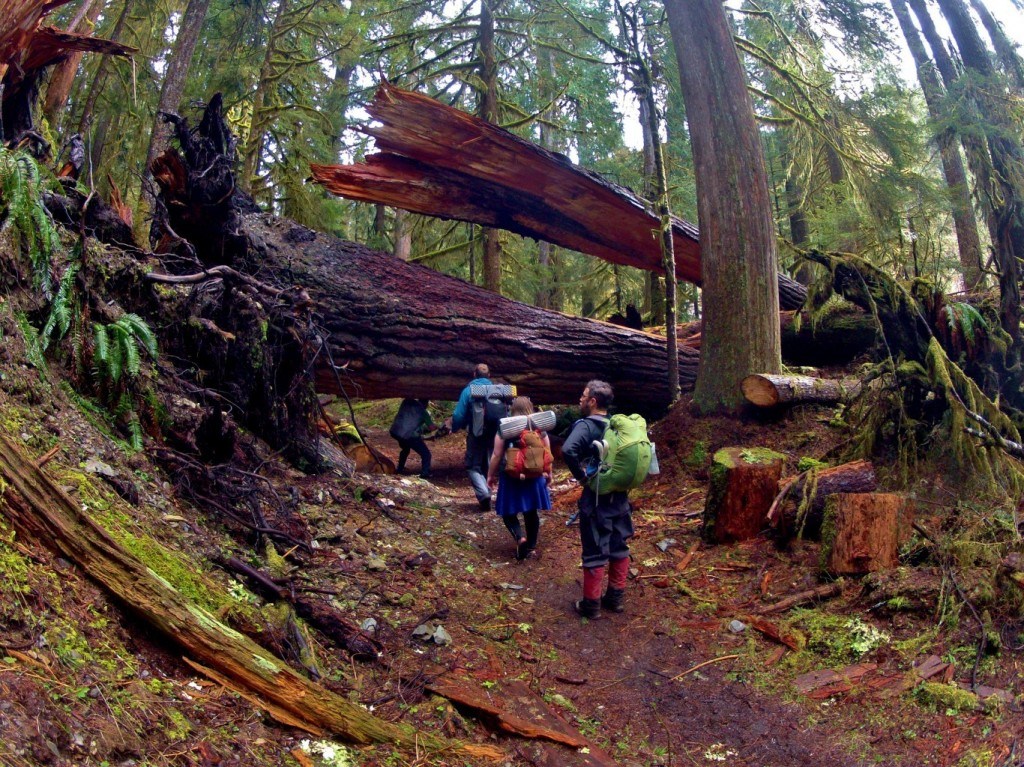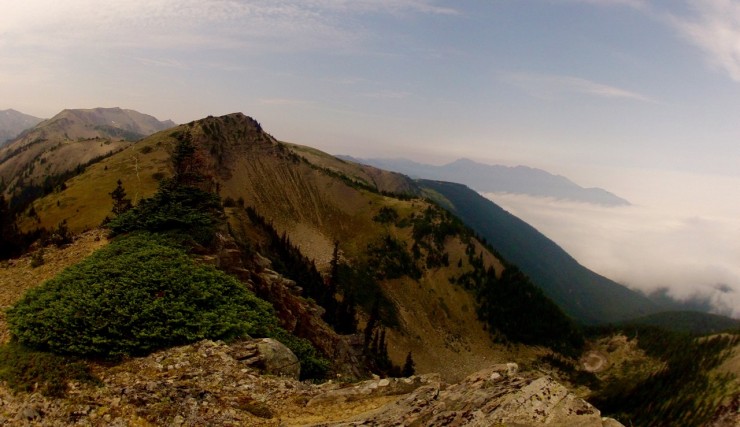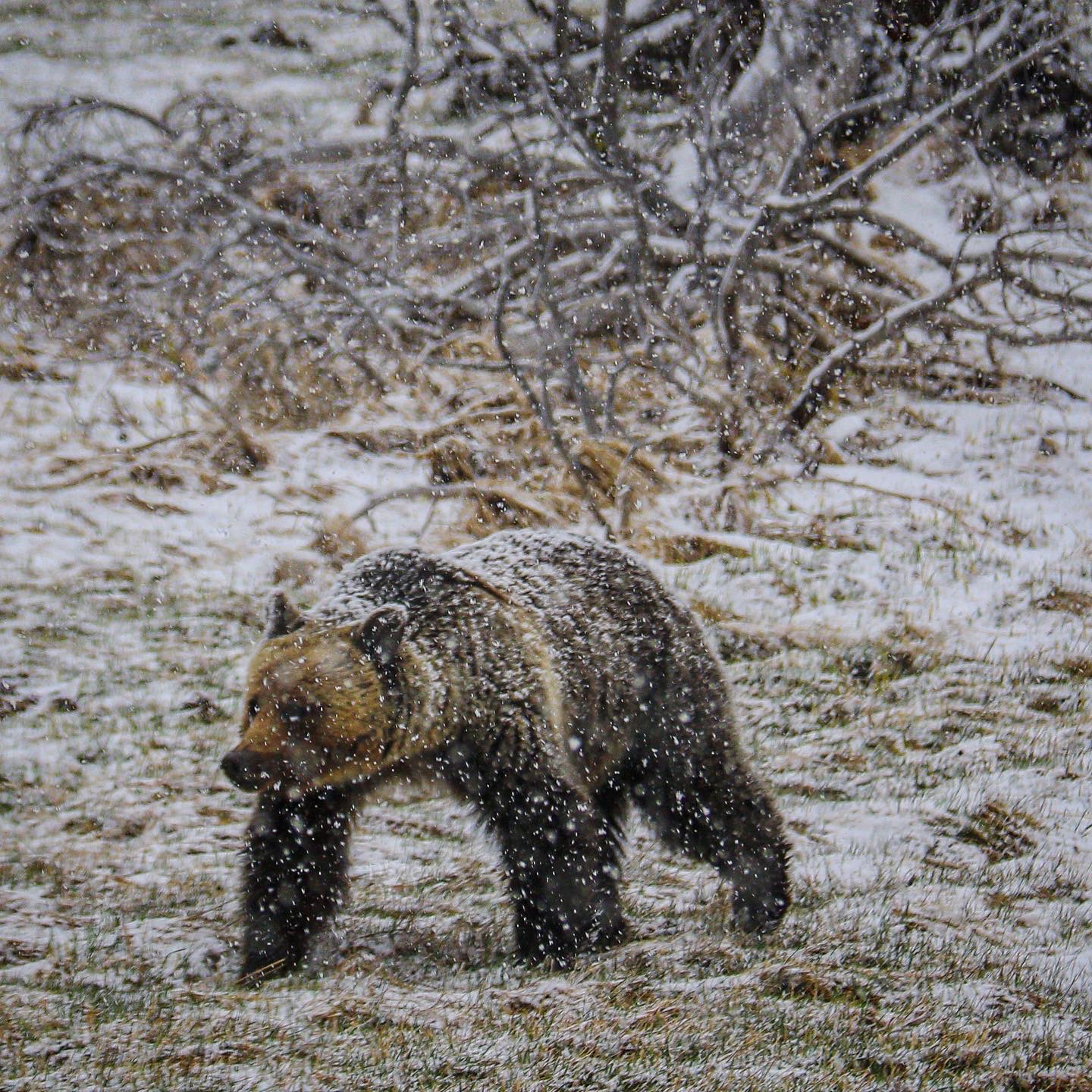Now that hiking season is upon us, we want to give everyone a simple reminder to be safe. Each weekend, trails around the region are packed with enthusiastic nature lovers, hoping for an incredible adventure around the region. As the snow is melting out from all but a few spots of our favorite high alpine trails, the entire Pacific Northwest’s wonderland of trails is accessible and ready for you! We return to our old favorite trails, long ignored from a winter’s worth of snow while new hikers are discovering their own favorite places far from the confines of simple trails. Even those of us who have been hiking year-round are reaching further and further into the interior of the beauty of Cascadia, reconnecting with nature one step at a time. While 99.9% of us will hike out and back with no issues, we find that there isn’t a bad time to remind everyone to stay safe and to be smart.
We won’t sugarcoat this.
Hiking can be dangerous. Sprained ankles, bad cuts and bruises, serious falls, broken limbs and even death are possible on almost any trail. However, the risk of death or serious injury can be easily minimized by following a few simple steps.
Bring the Essentials!

This is one steadfast rule that the majority of hikers will skimp on. Bringing 10 things with you, in the age of the minimalist hiker, seems wasteful and awkward, especially on shorter hikes. Skipping a few things might lighten your load, but it is important to bring what you might need and not what you know you will need. Look at the trail, the usage and the mileage before heading out. Obviously on extremely short hikes, your list of essentials is going to be much less than ten. However, if you are hiking on a real trail that has a potential, even the slightest, for something to go wrong, be smart. Have a bag with everything in it that you KNOW you might need. We also think that an app on your phone is a great extra resource to bring while exploring. Our favorite app, that works by tracking your route and giving you an up-to-date map, all without cell service, is Topo Maps+. We don’t leave home without this.
Know your Terrain!

Before you hike a new trail or one you haven’t seen in awhile, do some research on the trail. Read a guidebook, check online trip reports, ask the Outdoor Society a question, look at topographical maps and even look at Google Satellite images- Do whatever you can to understand the terrain you will be dealing with on your hike. Topo Maps+ is also a great way to look at the trail ahead of time and get to know the lay of the land. Researching your trail will help to be mentally prepared for all you will encounter. It will also be able to bring the right clothes, shoes, amount of water and food and other miscellaneous gear. Researching terrain will also let you know if you should expect a water source on the trail or if you need to pack extra water with you.
Dress Properly!

If you hike any of the popular trails in the region during the spring summer and fall months, you have seen your fair share of people wearing clothes that aren’t the smartest for day hikes. Almost every year, incidents like the following happen around the region because people don’t plan ahead before hiking. A few year ago, two hikers from Olympia decided that they would take a trip up to the summit of Mount Ellinor on the Olympic Peninsula. The day was wet and cold, but they decided to climb up Mt. Ellinor in yoga pants, tennis shoes and workout tops anyway. The weather soon reduced visibility to just 15 feet before the inevitable happened. Unprepared for the conditions and unfamiliar with the terrain, one girl slid, ripped her pants wide open and was forced to dial 9-1-1 for help to get down the mountain.
Before you say “Oh, I would never do something like that!”, think about each time you went out for a quick hike “knowing” everything would be ok. Wear the right clothes, the right shoes and bring raingear with you at all times. Even if the forecast calls for no rain over the next five days, always be prepared. A simple rule is that if you are wearing something you usually wear to work out in the gym while on a hike, you are underprepared. You might want to show off that “Bod” you have been working on since New Year’s, but showing off your toned arms, awesome legs and ripped abs isn’t worth the risk of an injury, hypothermia or death.
Leave a note of where you are going!
This is common sense. Never go hiking without telling at least two people where you are going and when you expect to return. Stick to your plan. Do not deviate from it, unless you have notified your two people on those changes. We would type more in this section, but the reality is, if you don’t do this and don’t stick to your itinerary, you are an idiot. Leaving a note takes all of five seconds and it could save your life. This is one of the simplest ways to stay safe and get rescued, should you get stranded.
Know your limits and abilities!

This is probably one of the most important things to do. You, more than anyone else, know what your body is capable of doing while hiking. The worst thing you can do is to push yourself too hard and get stuck, unable to hike up or down. Do not feel like you have to keep up with someone hiking faster than you, as they are hiking at their pace and not yours. As soon as you feel out of your comfort zone, take a break, eat some protein and drink some water/take a rest. If you still feel fatigued after a break of five or ten minutes with zero improvement of your health and well-being, rest a bit more and call it a day. You are hiking for your enjoyment, not to keep up with everyone else or shatter records.
Take plenty of breaks!

Hiking isn’t a race. If you feel tired, stop and take a small rest. There is no shame what-so-ever in having someone pass you on a trail. If you start getting tired, find a stump to sit on and kick back to enjoy the beauty of nature. Sometimes, just sitting in solitude along a trail can bring the best moments. After resting for 15 minutes in silence, birds start chirping more and wildlife, previously unseen, emerges from the forest around you. While everyone else is rushing to their destination, it is more than allowed to stop and smell the roses, especially when doing so will keep you rested, safe and thinking straight.
Stay Hydrated and Fueled Up!

The absolute worst thing you can do while hiking is to not stay properly hydrated and fed. Depending on the hike, you can lose anywhere between 2,000 and 6,000 calories to reach your destination. Those calories need to be replenished, or you will start seeing an increase in cramping, loss of high level cognitive abilities, dizziness and severe lethargy. Hiking is not the time to skip a meal or hold steady to your diet. Eat a ton while on the trails and diet the next day, when you are back at home.
More common than not eating is not bringing water with you. Nearly every time I go up Mt Ellinor in the summer, I give away bottles of water to hikers who brought just one small bottle of water for the entire trail. This is inexcusable. Bring more water than you think you would ever drink, bring extra Gatorade and bring water purifiers with you. If you are properly hydrated, you should need to urinate at least once on every hike and the urine should not be dark yellow or brown.
Check the weather!

The weather can change every five minutes in the Pacific Northwest, but it can be predicted somewhat well. Checking the weather for the location where you will be hiking the days leading up to your hike and then double checking the morning of your adventure will make all the difference in the world. Knowing what the temperature is, what the percentage for rain will be, the long term forecast, the ceiling of clouds and the wind speeds will help you decide what the perfect clothes will be for your trip. It will also tell you whether or not going out that day is a good idea. If the weather looks bad, but you really want to hike, find a location where the weather will impact you the least. If you are not used to hiking with low visibility in wind, rain and sleet, avoid the mountains during stormy days.
Example: If the forecast looks like clouds in the afternoon with a chance of rain in the evening, expect rain, wind and cold temperatures at higher elevations most of the day.
Stay on the trail!

Staying on the trail should always be done, not just for your safety, but for minimizing humanity’s impact on the fragile natural areas we all enjoy so much. Numerous injuries occur each day on trails around the country from people leaving the trail for a better picture or to make the trip more fun. Injuries also occur off-trail by hikers who get lost on the trail, which is something studying the terrain and trails can help alleviate. By staying on the trail, you are keeping yourself in a well-known area, so if an accident was to occur, search and rescue could easily reach you and transport you to safety. Leaving the trail on a hike should only be done for two reasons: To use the bathroom or to avoid an aggressive animal.
Give animals their space!
Animals are wild, and no matter how many people they see, they can still attack. Just a few years ago on Klahhane Ridge in Olympic National Park, a man was gored to death by a mountain goat. Hikers were getting too close to the animals. From not urinating far off trail, to feeding the goats, they became comfortable with getting too close to people. In 2012, Mount Ellinor was closed due to an aggressive mountain goat problem. While many laugh at this, mountain goats, like any animal, will attack if threatened. The best way to not threaten an animal is to keep your distance at all times. If a mountain goat does approach you, the National Forest Service recommends making noise, waving your arms, or if all that fails, throwing a rock or branch in the direction of the goat to scare it away. This should only be done if the goat is legitimately threatening you, not just walking by. Also, do not feed or try to touch any animal. This includes squirrels, chipmunks, birds, deer or other people’s dogs.
More on goat safety can be found here.
Do not leave your hiking partner!
If you are hiking alone or with a group, never leave someone behind or let someone hike on too far ahead. This is where a large number of accidents happen, including a well known death of a notable hiker in Washington State, Karen Sykes. Leaving someone behind is rule number one and should be avoided at all costs. If your group is tired and can’t continue, stop and head back. Make the return trip fun and plan on taking another adventure when everyone feels better. Live to hike another day.
Finally…

Following these rules is not a guarantee to keep you safe and many other hikers have their own rules for safety that are great. This list is intended to get each and every hiker thinking about their own actions and behavior on trail and, hopefully, being prepared enough to help others be safe on the trails. Please share this list with everyone you know who hits the trails so we can try to get through a season without hearing about a hiker who was ill-prepared needing to get airlifted off of a mountain. As always, while in nature, follow the Leave No Trace Principles and be kind and courteous to your fell outdoor enthusiasts.
WANT THE BEST ADVENTURES IN AND AROUND OLYMPIC?




